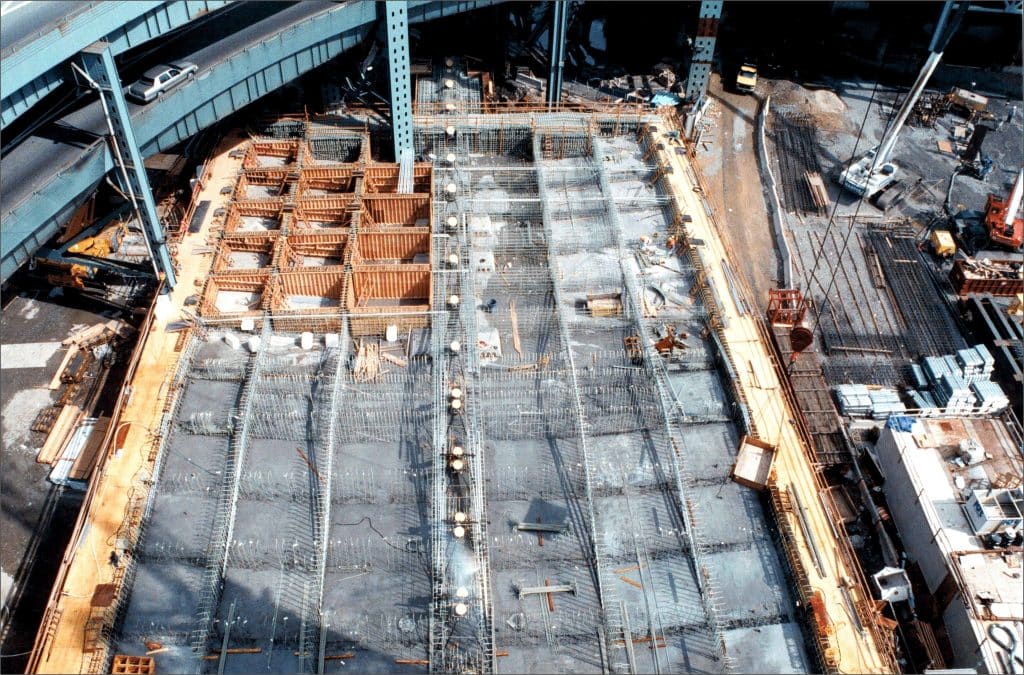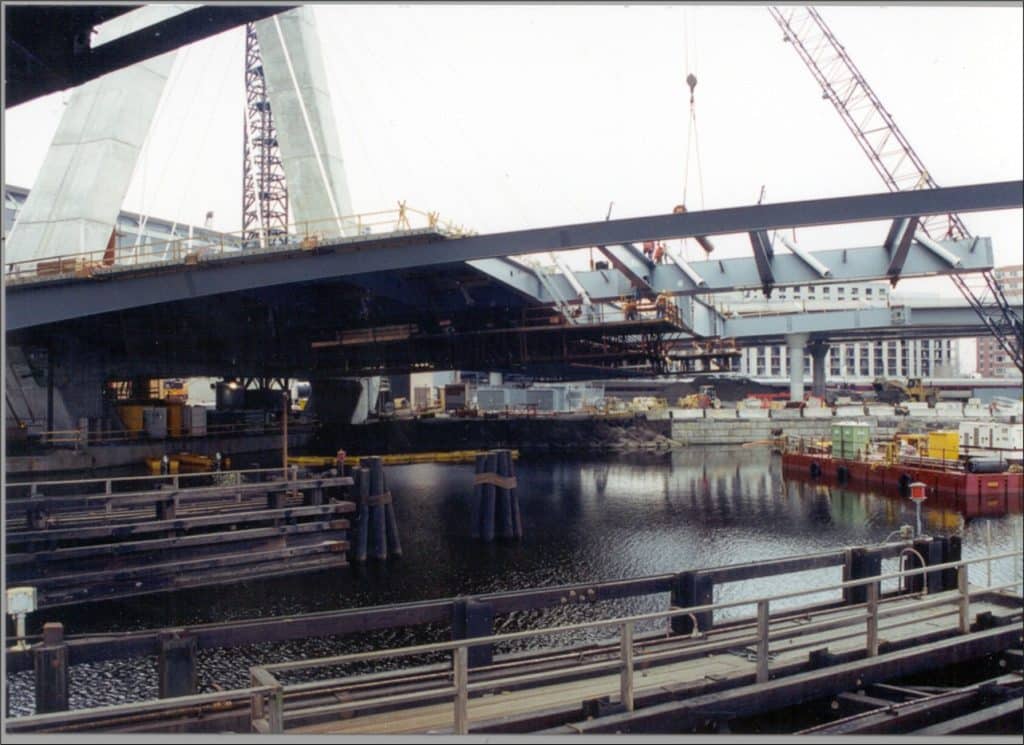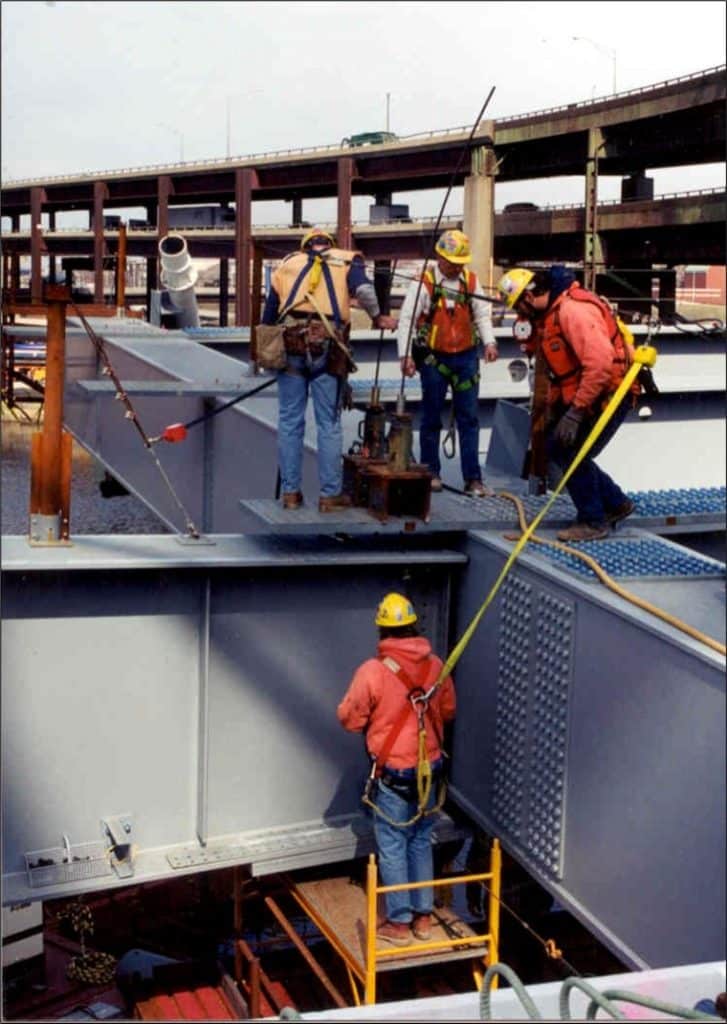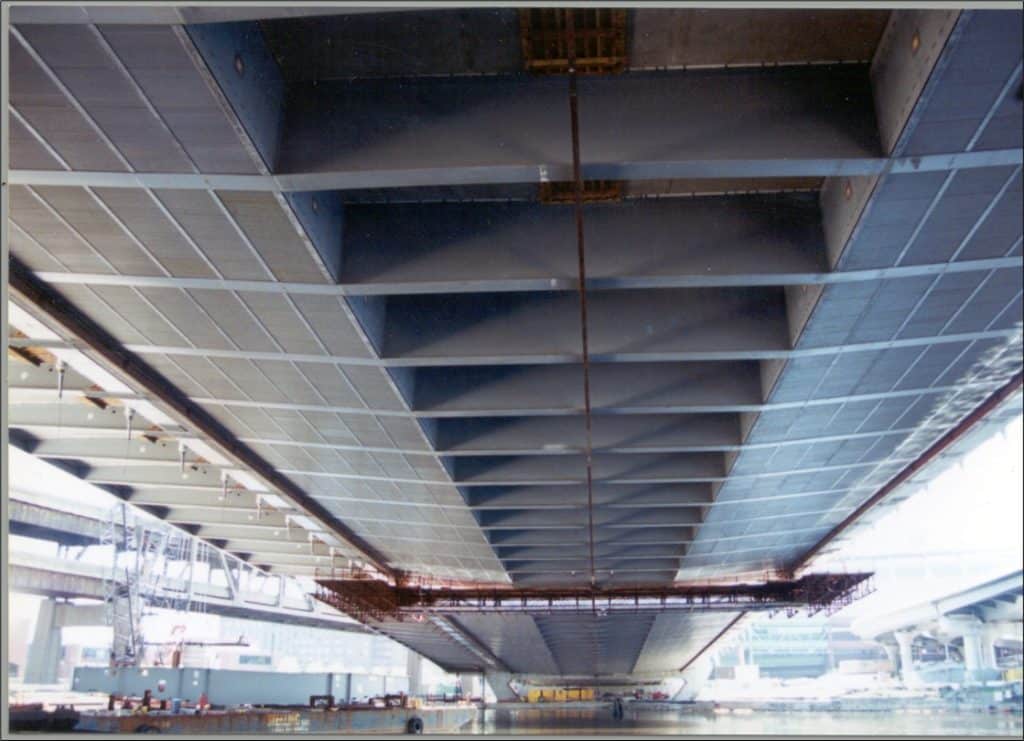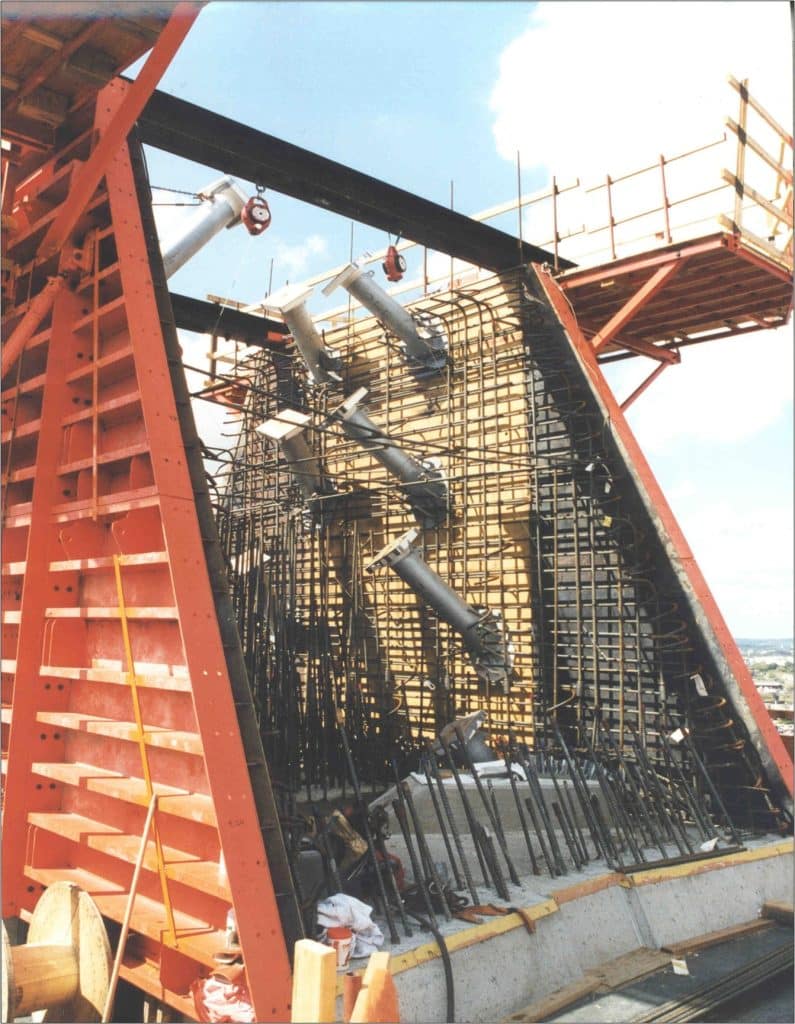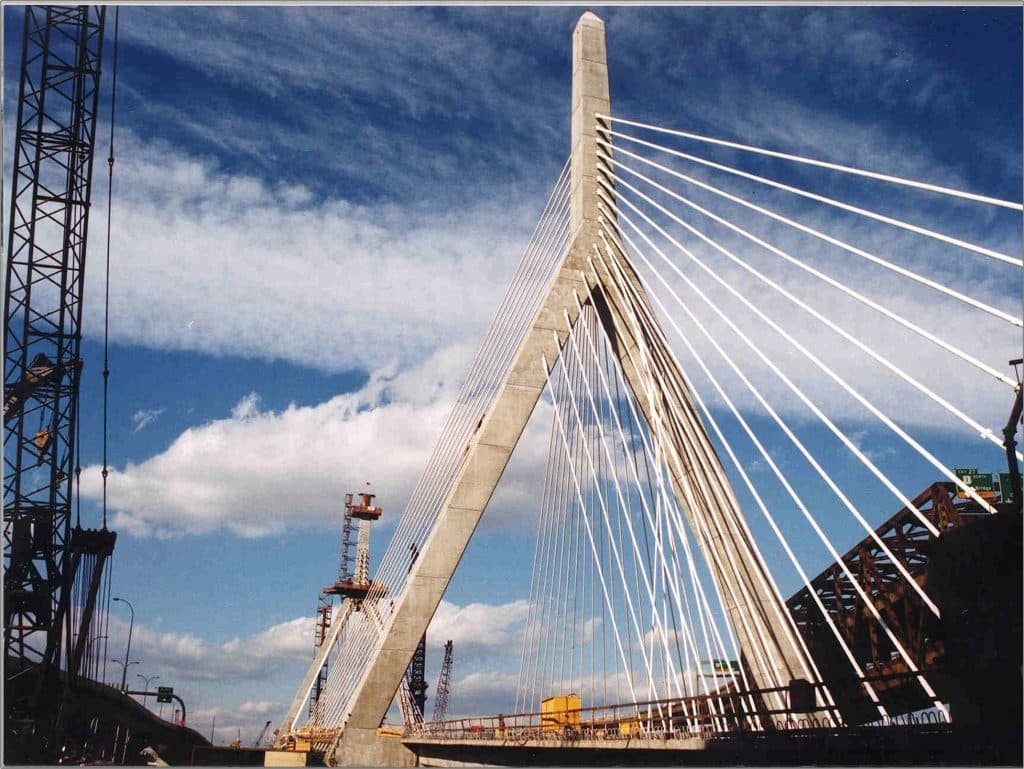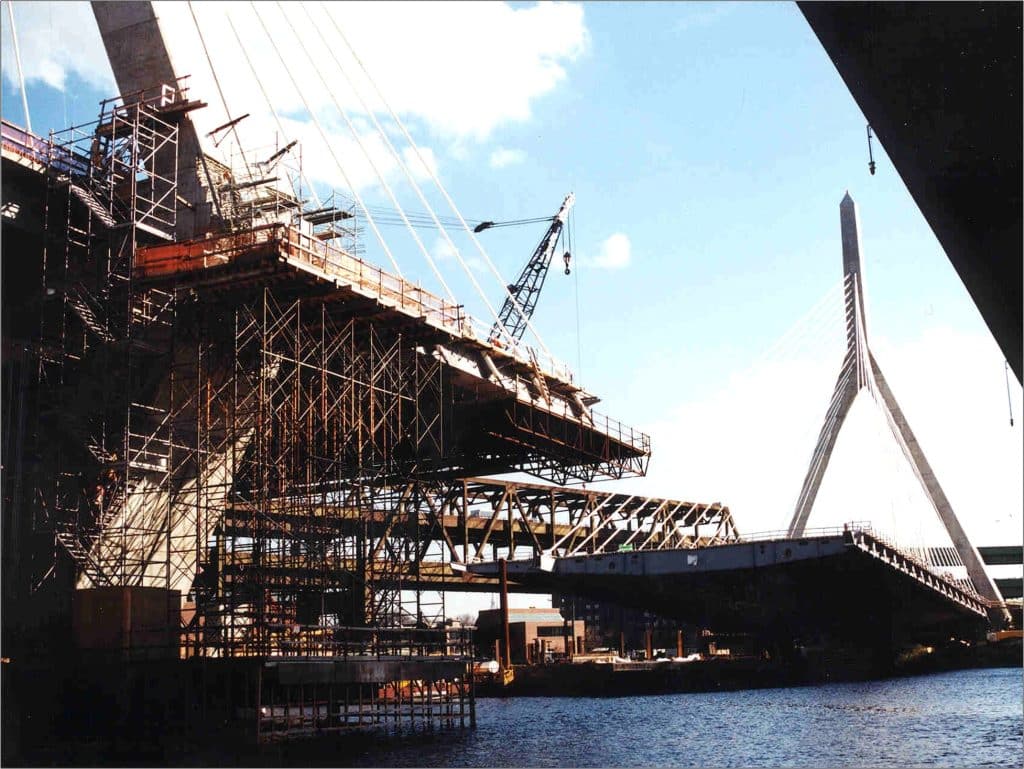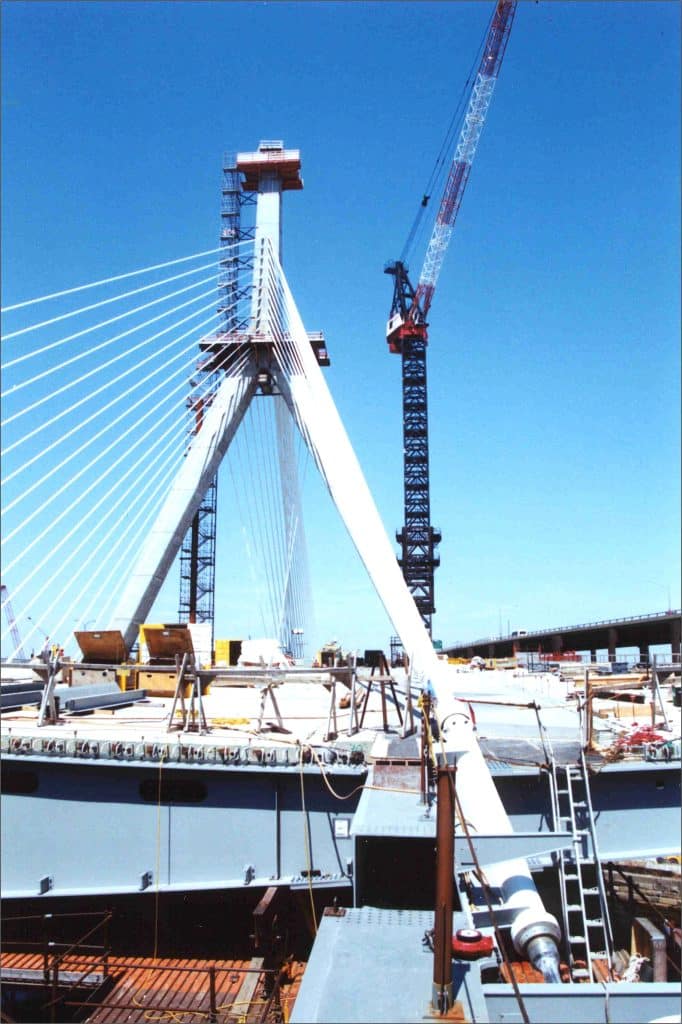Description of Services
This project formed part of the iconic Central Artery/Tunnel Project in Boston, MA, and involved the design and construction of the Leonard P. Zakim Bunker Hill Memorial Bridge—a landmark cable-stayed structure carrying ten lanes of traffic over the Charles River. The bridge was highly unique in its configuration, distinguished by its slender, inverted Y-shaped towers, asymmetrical geometry, and a two-lane roadway cantilevered beyond the eastern cable plane.
The design of the bridge was driven by severe site constraints and complex functional requirements. Its structural elegance and economic efficiency reflected a pure application of the form-follows-function philosophy. The 745-foot main span, with a width of 195 feet, featured a steel composite design, while lightweight concrete was utilized on the cantilevered ramp to reduce eccentric dead loads. The asymmetric 295-foot and 425-foot back spans were constructed using multi-cellular concrete box girders—solutions dictated by the need to maintain existing traffic on the old crossing during phased construction.
Reliance Engineers Inc.’s Principal Engineer, Sena Kumarasena, Ph.D., P.E., played a pivotal role in this nationally recognized project. He served as Lead Engineer and Deputy Project Manager during the final design phase, and later as Project Manager for the construction-phase engineering services. One of the major structural challenges involved the cantilevered roadway, which imposed approximately 60% higher cable forces on the eastern plane compared to the western. This imbalance generated significant torsional demands on the tower spire, which were resolved through the adoption of a compact, composite tower section and strategic cable geometry optimization.
Throughout the project, the team successfully addressed numerous design and constructability challenges, many of which required first-of-their-kind engineering applications. The Zakim Bridge remains a landmark structure and a testament to innovative design, collaborative engineering, and the successful execution of complex infrastructure under demanding urban constraints.

